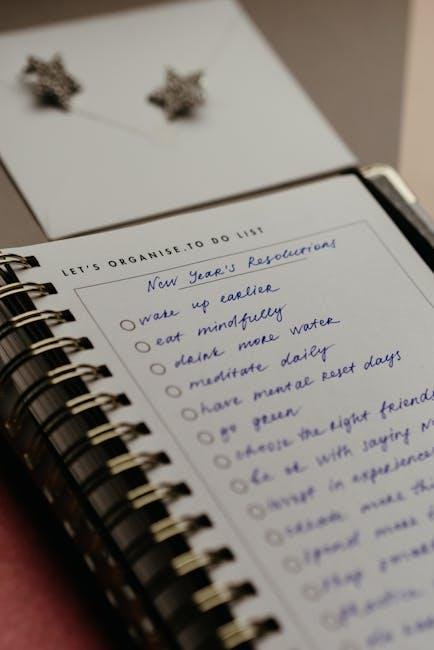In the hustle and bustle of modern life, the line between needing therapeutic support and simply requiring a moment of respite can often blur. We find ourselves navigating stressors that range from the daily grind of work and family commitments to the heavier burdens of anxiety and emotional fatigue. Amidst this whirlwind, the question arises: Is it time to seek the guidance of a therapist, or would a little self-care do the trick? This article delves into the nuanced signs and signals that can definitely help you discern between a deeper emotional need for therapy and the simple, yet profound, call for a break. Join us as we explore the crossroads of mental wellness and self-awareness, empowering you to make an informed choice that aligns with yoru unique journey.
Recognizing the Signs: When Stress Becomes Overwhelming
Stress can creep into our lives in subtle ways, often leading us to overlook its impact until it becomes overwhelming. It’s essential to pay attention to your mental and physical signals. Some clear indicators that stress might potentially be affecting your well-being include:
- Physical symptoms: Headaches,fatigue,or unexplained aches and pains.
- Emotional changes: Irritability, anxiety, or feelings of hopelessness.
- Cognitive challenges: Difficulty concentrating, forgetfulness, or racing thoughts.
- Behavioral shifts: Changes in sleep patterns, withdrawal from social activities, or increased substance use.
Recognizing these signs can be the first step toward reclaiming your balance. Keeping a stress journal can definitely help you identify triggers and patterns in your behavior. Take note of how certain situations or interactions make you feel. A simple strategy includes creating a table to assess your stress levels throughout the week, helping you identify what aspects of your life may require attention:
| Day | stress level (1-10) | Trigger | Action Taken |
|---|---|---|---|
| Monday | 8 | Work deadline | Short break |
| Tuesday | 6 | Family commitment | Meditation |
| Wednesday | 7 | Financial worries | Exercise |

Understanding Emotional Distress: differentiating Between Need for Therapy and a Simple Break
Emotional distress can manifest in various ways, making it essential to identify whether what you’re experiencing warrants professional help or if it simply signals the need for a breather. Therapy frequently enough becomes necesary when you face persistent feelings of sadness, anxiety, or anger that interfere with daily life. Indicators include:
- Overwhelming feelings that last for weeks or months
- Intense mood swings that seem unmanageable
- Difficulty concentrating or making decisions
- Social withdrawal or isolation from loved ones
- Physical symptoms like fatigue, headaches, or stomach pain
Conversely, recognizing when you just need a break can be equally beneficial for your mental health. Taking a step back becomes crucial when you experience temporary stress due to external factors, including work deadlines or life transitions. Signs that a break may suffice instead of therapy include:
- Feeling fatigued but finding joy in activities
- Experiencing feelings of stress primarily tied to specific situations
- Having effective coping strategies in place
- more good days than bad days
- Supportive relationships that provide comfort

Evaluating Your Situation: Self-Reflection techniques for Clarity
Understanding your personal landscape requires digging deep within your thoughts and emotions. Begin by setting aside time for introspection. Consider journaling your feelings; writing down your thoughts can lead to a clearer understanding of your mental state. Reflect on the following aspects in your journal:
- Recent changes in your life and how they affect your mood.
- Patterns in your emotions or behaviors that concern you.
- Moments of stress or anxiety and potential triggers.
Along with journaling, try utilizing mindfulness techniques to assess your well-being. Engaging in meditation or deep breathing exercises can help you connect with your inner self. Assess your feelings through a simple table layout, prompting you to identify whether you experience more positive or negative emotions:
| Emotion | Frequency | Intensity (1-10) |
|---|---|---|
| Joy | Often | 8 |
| Anxiety | Sometimes | 6 |
| Sadness | Rarely | 3 |
By comparing these emotions, you can gauge whether your feelings are momentary or require deeper exploration. Such tools can provide clarity in deciding if it’s time to seek professional help or if you merely need a pause to reset.

Creating Your Action Plan: Choosing Between professional Help and Personal Time Out
Choosing between seeking professional help and taking a personal time out can be a pivotal decision in your journey toward mental well-being. Consider your current emotional state—do you feel overwhelmed by persistent feelings, or are you merely exhausted from daily stressors? If your emotions consist of deep-seated patterns or thoughts that linger longer than a few days, it might indicate a deeper need for understanding. on the other hand, short-term fatigue from work or life could signal the need for some rejuvenation rather than a basic overhaul of your mental health.
When deciding, it’s beneficial to reflect on your situation using a simple checklist. ask yourself the following:
- Are my stressors situational or chronic?
- Have I exhausted personal coping mechanisms?
- Do I have ongoing support from friends or family?
If you’re torn between options, creating a small action plan can aid clarity:
| Professional Help | Personal Time Out |
|---|---|
| Involves therapy sessions with a licensed professional. | Includes activities like a weekend getaway or a staycation. |
| focuses on guided techniques for emotional processing. | Emphasizes relaxation and self-care practices. |
| Can lead to long-term strategies for mental health. | can provide immediate relief and refresh viewpoint. |
Final Thoughts
In the grand tapestry of mental well-being, distinguishing between the threads of needing therapy and simply craving a break can be a delicate endeavor.It is essential to listen to the whispers of your inner self, seeking clarity amid life’s noise. Recognizing when you might benefit from professional guidance versus when a simple pause is all you need empowers you to navigate your emotional landscape with greater confidence.
As you ponder your own needs, remember that taking time for self-reflection is never wasted.Whether it’s a quiet moment of solitude or a heartfelt conversation with a trusted friend, each step you take is part of your journey towards understanding yourself better. Ultimately, prioritizing your mental health is an act of courage and an invitation to explore the depths of your well-being.
So, as you move forward, hold space for both your emotional needs and the reality of your circumstances. Whether it leads you to a therapist’s office or a cozy corner for some well-deserved rest, trust that you are on the right path. Embrace the process—after all, the journey of self-revelation is as invaluable as the destination itself.

